Our extra-large special edition is here. Subscribe today and receive the 25% longer issue at no extra cost!
10 Science-Fiction Stories Reimagined As Games
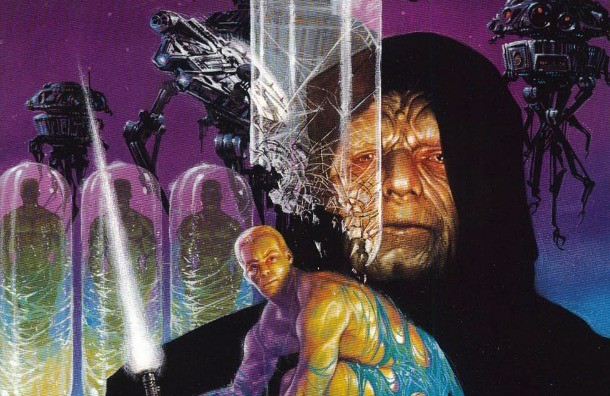
When I hatched the idea for this science-fiction list, I spent a fair amount of time looking at my movie and book collections for candidates. I jotted down every title that I thought had potential to be adopted into a game and walked away with a whopping 241 options on my list. From classics like H.G. Wells' War of the Worlds and Arthur C. Clarke's Rendezvous With Ranma to modern hits like The Hunger Games and Christopher Nolan's Inception, I see a great and unique game waiting in all of science-fiction properties on my list. While I would love to share my game ideas for all 241 titles, I forced myself to narrow the list down to 10 – the games I would want to play the most.
Rather than just jot down summaries of each of the books, comics, and movies I've selected, I've put together game ideas for each. I did a similar thing with Marvel a few months ago, and decided to follow the same format, which includes picking the developer I feel would best be suited for the project. Some of the entries on my list have already made a splash in games, but I feel they are primed to come back in a big way in this new generation of games. Other picks are famed science fiction stories that I feel deserve a shot in the game space.
As always, I invite all of you to list your ideas in the comments section below. Let's start with something that is close to my heart: Star Wars.
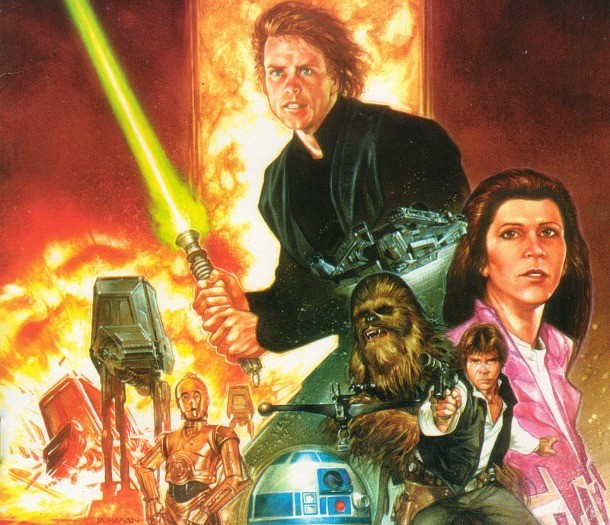
STAR WARS: DARK EMPIRE
Developer: Sony Santa Monica
The Pitch: Roughly a year ago, Disney aimed its Death Star laser at the Star Wars expended universe and pulled the trigger. The blast affected decades worth of stories. Fantastic stories. Almost every event set after Return of the Jedi was turned into a "what if?" or "legends" scenario. The lore reset brings Chewbacca back from the grave, erases Admiral Thrawn's brilliant tactical leadership from the Empire, and leaves Han and Leia without children. Removing these huge events from Star Wars' timeline is a blow to fans who dedicated their time and money to this ongoing saga.
Even though Disney is forging ahead with a streamlined continuity and new rules for its lore, Star Wars' best stories of yesteryear shouldn't be forgotten, even if their events contradict what happens in Episode VII and beyond.
Star Wars: Dark Empire, a comic series from Dark Horse Comics, is the best candidate I can think of for a new Star Wars video game. Within this fast-moving story, our beloved heroes adapt dramatic new identities. We see Leia grow powerful with the Force just as her brother Luke gives in to the temptations of the Dark Side. He becomes the puppet of the newly reborn Emperor Palpatine, who returns as a clone more ruthless and powerful than ever. So powerful, in fact, that he can use his Sith powers to tear apart the fabric of spacetime. The army he unleashes against the galaxy ranges from heavily armed stromtroopers to clones of himself.
Han, Chewbacca, and Lando are up to their old tricks, and are in rare form in this story, playing a crucial role in helping the Republic deal with the Emperor's wrath. We also see Boba Fett emerge from the Sarlacc Pit and, at long last, show us what his suit is capable of.
This story is overflowing with Star Wars fan service. Yes, it's a little over-the-top in its character development and action, but it retains the essence of the classic film trilogy, and ends up being one of Star Wars' most entertaining rides.
The Game: Enlisting the talents of Sony Santa Monica, the Dark Empire game closely parallels the comic book's story, picking up six-years after the Battle of Endor from Return of the Jedi. After learning that the Empire is reborn and is tearing apart planets with new low-flying Devastator ships, and that a bounty has been placed on the heads of the top Republic officials (including Han and Leia), players are thrown into action. In this first level, the player can suit up as either Lando or Luke in a battle against Imperial forces on a Star Destroyer that is tumbling through Coruscant's atmosphere (a sequence George Lucas aped in Revenge of the Sith). If you have a friend online, the game can be played cooperatively.
Luke Skywalker's combat is reminiscent of Kratos' from God of War. He's acrobatic, aggressive with the Force, and nearly unstoppable when taking on weak Imperial forces. Luke can throw his saber, and also dislodge most objects in the environment to throw at his assailants or use as a shield for Lando. Luke isn't killing through the Force, but he is breaking bones and severing limbs, showing a hint of the dark side he keeps fighting off.
Lando's gameplay is the polar opposite of Luke's, taking a more calculated and slow approach to down Imperial forces. He is most effective in stopping incoming troops, often setting up camp on cliff sides to snipe these targets, as Luke battles the forces head-on.
This odd cooperative experience between characters is not present in every stage. When Chewbacca and Han are together, or Luke and Leia are fighting side by side, the experience changes to that of a run and gun shooter or a frantic Dynasty Warriors-like battle against hundreds of troops.
Vehicles also play a large role in the game. Luke uses his X-Wing in a guided shooter level reminiscent of Star Fox, and Han pilots an AT-AT in a stage that is mostly designed for cackle-worthy moments and massive amounts of destruction.
Up Next: A day in Manhattan...
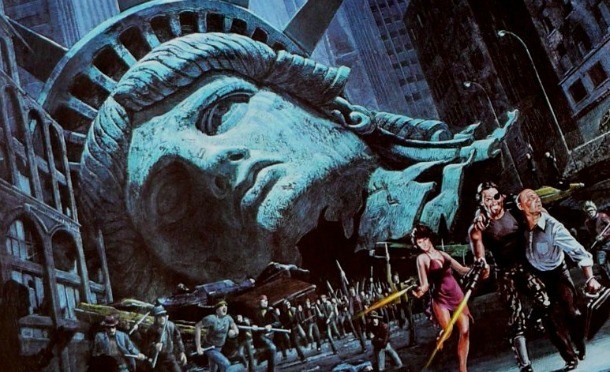
ESCAPE FROM NEW YORK
Developer: Ubisoft Montreal
The Pitch: The development team behind Far Cry 3: Blood Dragon is tapped to adapt John Carpenter's 1981 film, Escape From New York, into a video game. Designed as an open-world experience, players suit up as the great Snake Plissken and are given one goal: rescue the President of the United States of America. This is no easy task, as the President is trapped with the largest prison in the world. The entirely of Manhattan Island has been transformed into a prison as a last resort to battle an increasing wave of crime and violence in America.
The game retains the look and sound of the '80s film, right down to having archaic and low-budget special effects. Players can also toggle lower resolutions and scan lines to complete the picture, should they choose to have it be as authentically '80s as possible.
The Game: The game
features the latest advancements in first-person open world gaming; any vehicle you
see can be used, almost every building can be entered, and the bullets
you fire greatly affect your standing with factions in the world. Holding true to the movie's story, Snake, presumably voiced by Kurt Russell, must work his away across Manhattan Island within 24 hours to save the President. These hours don't unfold in real-time, but the player is given updates on the time left when new story missions are engaged. After the game is completed, a second "24 Hour" mode unlocks, pushing the player to complete the game within the set amount of time. Speed running this mode won't work, as Snake also has to deal with the booster shot he was given prior to entering New York. The booster was given to ward off disease, but secretly also contains micro-explosives that can only be deactivated 15 minutes before they detonate. The timer on the explosives is 24 hours.
Although the game takes many liberties in expanding the story through missions and side activities, most of Snake's actions would line up with the developments of his film counterpart. Car chases, shoot outs, stealth sequences, and a little bit of player choice through conversations (who to ally with and who to betray) accompany missions tailored to mimic the film's story. Snake's glider is also used extensively to speed up world travel and to reach higher vantage points. New York's soaring vertical space is used extensively for sniper missions and glider sequences.
At the end of it all, the player determines the fate of the President, which unfolds in two endings.
Up Next: Bug killing with friends...
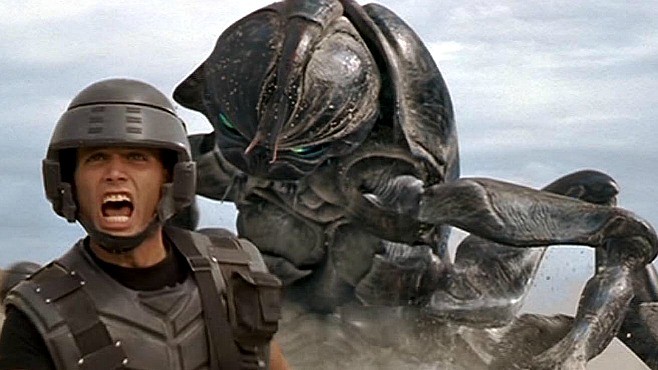
STARSHIP TROOPERS
Developer: Gearbox Software
The Pitch: Building off of Gearbox Software's success with the Borderlands series, this developer is contracted to make a four-player cooperative FPS based on Robert A. Heinlien's Starship Troopers universe. Since the Starship Troopers book and films offer different takes on the same subject matter, the game taps into both to extract the best elements that this bug-killing property has to offer.
The tone falls in line with the film, offering plenty of blood and gore as jokes and bad puns are rattled off. All of the technology is stripped from the book, giving players a wide range of gear like armaments that barely work and powered-armor endoskeletons that can make short work of entire armies of bugs.
The Game: Players begin on an orbital flagship, which serves as their base of operations and lobby to meet up with other players and shop for new weapons and gear. The ship also provides shuttles to different solar systems and planets. Players can jump to different planets to experience a linearly told story, or they can venture off of that path to compete in daily "Last Stand Wars," which pit a group of four players against hundreds of bugs. Players don't have much range of movement in these battles, as they are tasked to hold their ground and not let the bugs advance. The scale of the conflicts is huge with bug corpses flying through the air, explosions scorching the terrain, bosses posing great threats, and a kill-count meter rolling high and higher.
The story is designed to be a sequel set many years after Heinlein's story. Johnny Rico is mentioned only in passing, but mankind is still befuddled by their enemies. The capture of a brain bug didn't result in much of an advantage. Rather than learning more about their foes, mankind decides to create bigger and more powerful weapons in an attempt to eradicate every bug from the universe.
Players get to design their character's appearance and extensive armor sets. Classes consist of a sniper (doubling as a medic), heavy assault (equipped with rocket launchers and energy shields), a scout (capable of calling in air strikes), and the crazed melee expert (all swords and speed). Along with battling bugs, players are working to improve their characters, from the equipment they own to the powers they can unleash. This is accomplished by leveling up (to earn skills and attribute points) and gathering loot which is randomly dropped by enemies. The best drops come from the Last Stand Wars.
Up Next: Prehistoric Science-Fiction...

LAND OF THE LOST
Developer: Avalanche Software
The Pitch: For the younger generation out there, Land of the Lost is likely known as one of Will Ferrell's most disappointing films. For the kids of the '70s and '80s, however, it was a television show that doubled as the best way to view dinosaurs outside of going to a museum. In this odd television series, the Marshall family is thrown back in time after an earthquake creates a portal to prehistoric times. The game, which places players in an open world created by Avalanche Software, is a continuation of the television series, putting players in control of all of each Marshall family member.
This family squared off against a wide variety of dinosaurs, but there was also another enemy known as the Sleestaks that lurked in the underground. These reptilian foes (pictured above) added a mysterious element to the show that oozed science fiction. The Marshall family could also learned that they could communicate with modern day society using strange portal devices. The game explores all of these aspects, revealing answers that were never fully detailed in the show. The narrative flow unfolds much like the television show Lost, giving cryptic answers that don't come fully into picture until the credits roll.
The Game: Control over the Marshalls begins immediately after they wash-up on a river-bank mid-island. The first goal is to find a suitable place to set up camp – the location can be anywhere, but the player must make sure it isn't on a hunting trail. In this regard, it's a little bit like Minecraft. The camp needs to be secure and in a safe location. The player must locate materials that can be used to create fires, houses, and tools. The Marshall family didn't enter this world with any weapons, and have just enough food to last them a few nights.
Not everything must be crafted, however. Other portals from modern times have brought random things to this prehistoric age, ranging from airplanes (which can be repaired and used) to random trinkets like baseball cards and usable lamps. Weapons can also be procured, but are rare and ammo is finite. The best way to kill Sleestaks and dinosaurs is through hand-made weapons like bows and spears. Traps (like those the Ewoks used to topple an AT-ST in Return of the Jedi) can also be placed in key locations.
While offering a strong focus on survival and freedom of exploration, players can just play through the story without having to worry too much about crafting and growing a base. The goal of the Marshall family is to find a way to get back to modern day New York City.
Up Next: One man versus the universe...
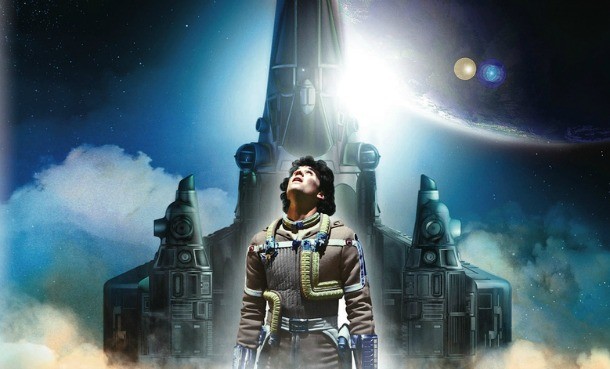
THE LAST STARFIGHTER
Developer: A new super team consisting of former Factor 5 and Star Fox developers
The Pitch: The Last Starfighter is an '80s "space opera movie" that tells the story of Alex Rogan, a teenager who is so good at video games that an alien race thinks he can save the universe. Games based on this cult classic film were in development for Atari 2600, Atari 5200, and arcade, but were never released. The NES Last Starfighter game, which did reach store shelves, was actually a renamed version of Uridium. A freeware version of the arcade game played by Alex in the movie was developed and released by fans. I don't think I need to say this, but this property deserves a legit Last Starfighter game that follows Alex's journey through the cosmos.
To do this license justice, a new development team consisting of people who worked on the Star Wars: Rogue Squadron and Star Fox series is assembled.
The Game: From the outset, players are asked if they would like to suit up as Alex Rogan to fight for the Frontier, or Xur to lead the Ko-Dan Empire to galactic dominance. The campaign is different for both factions. The two campaigns unfold through three distinct gameplay modes: on-rails missions designed for fast-paced action, free-form dogfighting in open space, and optional online multiplayer that directly affects the difficulty of the other two modes, depending on which faction is winning the war.
In the campaign, Alex and Xur are the only playable characters. When multiplayer is engaged, players must create their own character to fight for their faction of choice. Gameplay for all three modes can be played in first- or third-person, and relies heavily on twitch-reflexes for laser fire and evasive maneuvers. The gameplay is simple in scope, but helped by the sheer size of the enemy forces at any given time. Worlds crumble from the war, and the dark backdrop of outer space is hardly visible from the flurry of laser blasts and explosions.
The death blossom maneuver is reserved for the final conflict and cannot be used during multiplayer. Xur's last act is evading the death blossom and destroying Alex's ship.
Up Next: Enter the Matrix...

NEUROMANCER
Developer: Obsidian Entertainment
The Pitch: Most cyberpunk stories draw heavily from William Gibson's 1984 novel, Neuromancer. The ideas of a cyberworld, computer hacking, and high-tech body augmentations may not have originated with Neuromancer, per se, but Gibson brought them to the mainstream and packaged them in a way that inspired an entire generation of storytellers. From Shadowrun and System Shock to Deus Ex and Perfect Dark, Gibson's fingerprint is clearly seen in major video game franchises. So why not bring it back? Why not give it a modern day facelift?
Neuromancer was adapted successfully to games in 1988 by Interplay. One of the designers on the project was Brian Fargo, who now hangs his hat at InXile Entertainment, the studio that recently released Wasteland 2. Fargo and his team are tasked to draw heavily from Gibson's novel to create a sprawling open world adventure along the lines of Wasteland 2.
The Game: Henry Dorsett Case is featured heavily throughout the story, but is only a support character. Players instead create their own character from a wide selection of classes ranging from console cowboy to street samurai. The class that is selected opens up different narrative arcs and areas to explore. But even if players avoid classes that are skilled at hacking, they get to control Case in critical path story missions that take place in the Matrix. Conversely, if the player is a hacker, they'll get a good taste of Chiba City's streets from controllable sections featuring Molly Millions. The campaign follows the plot of the book loosely, giving players unique stories for their respective classes. Case and Millions' arc focuses mostly on the hunt for black clinics. Case's story is mostly untouched outside of this.
The game plays similarly to Wasteland 2, featuring an isometric camera perspective, turn-based combat, and a heavy focus on upgradable skills and abilities for each character in the party. Skill enhancements allow players to stealthily infiltrate complexes like Armitage offices, as well the computers housed within them. Cyberspace plays out similarly to the old Shadowrun game on Super Nintendo, pushing players to hack nodes, and defeat security threats (through turn-based battles) to reach the desired information or systems.
The game features hundreds of hours of content and is designed to be played again and again to unlock more of the story, which is hopefully penned or co-penned by Gibson.
Up Next: Back to the future...
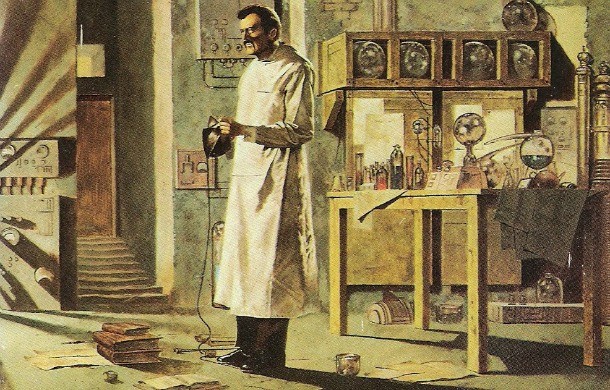
THE TIME MACHINE
Developer: Ready at Dawn
The Pitch: Originally published in 1895, H.G. Wells' The Time Machine is a roller coaster ride through time. A scientist known only as the "Time Traveller" discovers time is a fourth dimension – a dimension he realizes he can interact with with the help of a machine. He can travel anywhere he pleases – from the beginning of civilization to the last days of mankind – but his curiosity gets the best of him, and he finds himself woefully under prepared for the threats that lurk in the past, present, and future.
The image above, which is one of the many cover images to adorn this book throughout the years, screams Ready at Dawn. The steampunk-like technology, attention to realism, and the most important element – the extravagant moustache – remind me of this developer's PlayStation 4 game, The Order: 1886. Picture a similarly designed single player narrative structure to The Order: 1886. The game follows the Time Traveller through millions of years of Earth history, and to uncharted periods in the distant future.
The Game: The Time Machine is a linear, story-driven experience with a heavy emphasis on discovery and making players feel like they are stepping into pockets of time that no story or film has explored before. The Time Traveller has a journal on hand to chart his discoveries. Zooming into a first person view, players can study creatures and societies intimately, charting behavior patterns through gameplay mechanics that are similar to Pokemon Snap. In a way, there's a collectible aspect to this game. At the end of each level, you are learn how many cultural events or moments you missed along the way. Interacting with the environment in certain ways brings out specific events.
Discovery is just a small slice of the game. The Time Traveller's meddling in different eras doesn't always go unnoticed and is not always appreciated. He finds himself fleeing from molten death after a volcano erupts in the prehistoric days, battling alien invaders three thousand years in the future, flying a fighter plane into battle in World War I, and finding love in a daring rescue at the end of times on a water world where the rain never stops. He brings his love back to the past, where he believes they'll be safe, but tinkering with time brings chaos and reveals an unexpected enemy: an alien threat from deep within the cosmos.
The gameplay is widely varied for all of these sequences, giving players a hand at just about everything you find in video games, but most of these sequences are used only once. The most used mechanic is discovery – which sees players walking casually through beautifully detailed areas looking for things to observe (a gameplay mechanic Ready at Dawn leaned heavily on in The Order: 1886).
Up Next: War child...
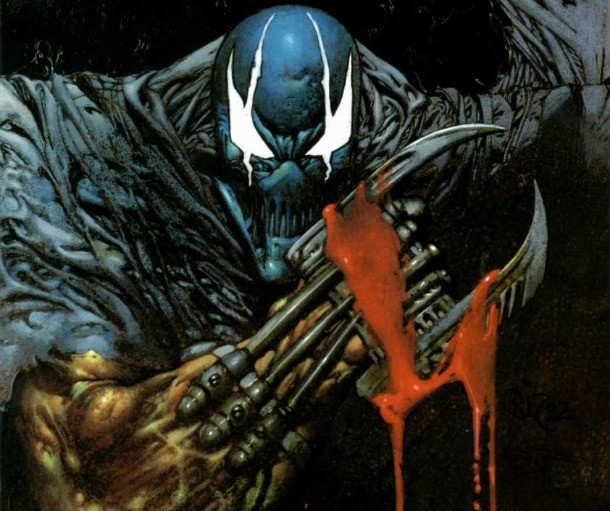
GRENDEL: WAR CHILD
Developer: Rockstar San Diego
The Pitch: Grendel: War Child is one of my favorite comic books, and it came close to never seeing the light of day. Writer and series creator Matt Wagner originally intended for War Child to run in his ongoing Grendel series, but its publisher, Comico, went belly up before the first issue of this story could hit store shelves. Wagner eventually sold it to Dark Horse as a 10-issue limited series. The story is deeply rooted in science fiction, but is also reminiscent of the film The Professional, in which an unlikely hero steps forth to protect a child who was originally a target.
The story follows a darkly clad character named Grendel (also called Paladin and Grendel-Prime), a mysterious mercenary who infiltrates the imperial capital city to kidnap Jupiter, heir to Orion Assante's throne. With the empire's Red Devil army in pursuit, Grendel and Jupiter find themselves on the run, traversing a wide variety of terrain, from irradiated wastes to the jungles of Africa.
The Game: Set in a series of sprawling open worlds that are introduced along a linear narrative, Grendel: War Child is a third-person adventure that follows the story of the comic book series closely, giving fans a more intimate look at the world and the relationship shared between Grendel and Jupiter. It's as much a game about the bond them form as it is evading the Red Devil army.
Players are pushed to thoroughly explore each environment (deserts, oceans, jungles, and cities) for supplies that can be used to build different vehicles, weapons, and habitats. Grendel and Jupiter start the game on foot, but through their exploratory efforts, can construct, cars, speeder bikes, boats, and aircraft to expedite their travel across hundreds of miles of land. Spending time to explore comes at a price, however. The Red Army draws closer with each passing second. One of the few things on the HUD is a meter that shows the distance between the duo and the Red Devil army. It's an elongated game of risk and reward. Obtaining new vehicles moves Grendel and Jupiter further out of reach. Failing missions or taking on too many side activities brings the army closer.
If the army reaches Jupiter and Grendel, the game ends, an alternate "failure" ending is shown, and the player's save is deleted. This may sound harsh, but we need more games that deliver severe consequences. Reaching the true ending of Grendel: War Child is difficult and requires community involvement to learn where the best weapons and items are located.
Holding true to the comic, Grendel relies heavily on hand-to-hand combat and his lightsaber weapon, but he can be upgraded in various ways to enable firearms and various other attack methods. Jupiter's abilities can also be enhanced, allowing for rare items to be found, and weapons to be used defensively.
The final act of the game moves away from the open world to a linear hour-long sequence that shows how Jupiter and Grendel's story concludes. I won't ruin the final moments of the story here, and instead strongly suggest you read this comic, as it is Wagner's finest work, and one of the coolest stories of survival I've come across.
Up Next: Become the ultimate hunter...

PREDATOR
Developer: Machine Games
The Pitch: As much as I love the first two Predator movies (the second one is better than the first), we keep seeing the same hunt over and over again on the silver screen, even in the off-shoot movies. Sure, a jungle setting is much different than a city, and yes, adding aliens to the mix changes the playing field, but the battles hit the same note: a predator fights a human being. Hollywood loves that human element. It makes sense from a storytelling perspective. It makes sense in drawing in the audience. Above all, however, it turns the predator into a one-trick pony. we know that they traverse the universe for different species to hunt. Why not show us the other species they hunt? That's where Predator could make its mark in the game space; by letting the player suit up as one of these lethal killers to take down the toughest beasts and beings in the cosmos.
The Game: Machine Games is tapped to create a free-form Predator game that allows players to pick which alien species they want to hunt from a map of the universe; some species require higher levels, better weapons, etc. Once a mission is selected, the experience becomes linear and story driven. The story isn't about the predator species or your character, per se, but the hunt. The narrative is used to give the battle drama and scope. Most of the battles unfold across sprawling landscapes, playing out like a typical story-driven FPS level. The aliens range from those with sophisticated technologies to the biggest, angriest beasts that artists can dream up.
Paying homage to the old Mega Man games, the order that certain aliens are taken down brings rewards (usually new weapons or skills) that can be used to expose the weak spots of other foes. The gameplay is similar to Wolfenstein: The New Order, but offers scripted prey tracking sequences, which play out more like the slower moments in Condemned than the fast-past sprint to find the creature in Evolve.
Up Next: Who can you trust?
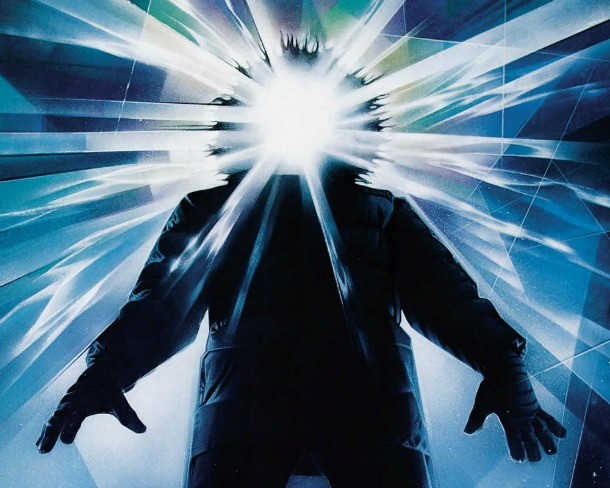
THE THING
Developer: From Software
The Pitch: If this isn't apparent yet, I'm a big fan of John Carpenter's work. His film, The Thing, tells the story of an Antarctic research team stumbling upon alien life, a chilling tale loaded with suspense, horror, and a strong emphasis on character development. The viewers of this film become investigators, looking closely at every characters' mannerisms to see if the alien has gotten to them or not. In 2002, developer Black Label Games successfully created a video game adaptation of The Thing that honed in on the mistrust between the scientists in the research station. They also nailed the ruthlessness of the alien entity. It was an ambitious first crack at this series by Black Label, but they sadly didn't get a chance to revisit this universe.
I'd like to see From Software take a whack at it. And yes, I think it should follow the Dark Souls or Bloodborne formula.
The Game: Rather than returning to the arctic, this new story suggests that the alien threat wasn't contained at the research station, and has spread like a disease across the entire planet. Fifty years after the event, all of our cities lie in ruin, but they haven't been abandoned. Life still exists. Human beings walk Chicago's streets. Wildlife roams freely in the forests of New York. At times, life looks normal. But can you trust your eyes?
Players take on the identity of a survivor who begins the game in an underground colony. After this secret abode is discovered by the alien parasites, mankind is forced to flee. Not many make it out of the colony. You are separated from everyone, and are forced to wander the wilds and the ruins of the world, looking for food and help. Armed with crude weapons like bats, knives, and whatever can beat something to death, you must fight for your survival, and above all, be careful who you trust. A human being that teams up with you may end up being an alien in disguise, and will likely stab you in the back when you need them most.
Enemies range from infected humans to elaborate multi-story aliens composed mostly of decomposing bodies. Any form of life, be it a dog or a lion escaped from the zoo, is a potential threat. You'll have to determine if you attack, evade, or interact with the people or species. Guess correctly and you'll reap a wide variety of rewards, like rare weapons and skill points. Guess incorrectly and you'll find yourself backed against a wall and in for a difficult fight.
Gameplay is designed just like the Souls experience with quick-reflexes and evasive maneuvers dictating success or failure. The ultimate goal of the game is to escape the madness and find a desolate location that you can call home. Getting there takes you through cities, bogs, mountain passes, and across alien-infested prairies. The tone is every bit as dark and twisted as From Software's other games, but with a sprinkling of science-fiction concent, such as mysterious alien weapons procured from a crash site.
The multiplayer component also plays off of the trust factor. Is the person running at your side human, or are they an alien entity that wants to feast on your soul to become more powerful?

Get the Game Informer Print Edition!
Explore your favorite games in premium print format, delivered to your door.
- 10 issues per year
- Only $4.80 per issue
- Full digital magazine archive access
- Since 1991









